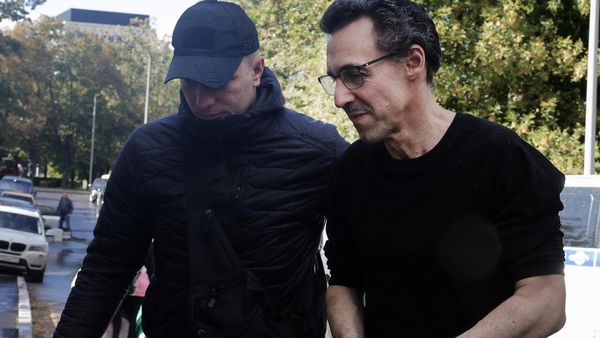
Fear, anxiety and resignation stalk Nepal’s domestic airports. Norwegian tourist Waldemar Wergeland is relieved to have landed safely at Kathmandu’s domestic terminal. He admits he was worried about flying in Nepal. “We did a lot of research before we made up our minds to travel by air,” he says.
At the airport in the southern city of Siddharthanagar (also known as Bhairahawa), Nepali folk singer Alif Khan says he stopped taking flights to his performances after a recent deadly air accident. “I started travelling by bus, but I got frustrated by the long traffic jams and landslides on the way. So even though I’m scared, I’ve started flying again,” he says.
“What’s the alternative?” says Urmila Gurung, who is flying from the same airport with her two-year-old son. “In Nepal, the only safe way to travel is by foot.”
The passengers’ conflicting emotions reflect Nepal’s reputation as one of the world’s most dangerous places to fly. All Nepali airlines have been banned from operating in EU airspace since 2013 due to safety concerns.
The country’s air safety record was in the spotlight again this month, when a helicopter on a sightseeing trip to Mount Everest crashed as it returned to Kathmandu, killing all on board: five Mexican tourists and the Nepali pilot. It was the fourth helicopter to crash this year.
In January, 72 people were killed when a plane crashed on approach to the city of Pokhara, the gateway to many of the country’s famous trekking routes. The previous May, 22 people died when a plane slammed into a mountain while flying from Pokhara to the tourist base of Jomsom; 23 died in another crash on the same route in 2016.
There were 72 fatal air accidents in Nepal between 1962 and January 2023, resulting in 935 fatalities, according to analysis by the Nepali Times. Experts say the country’s mountainous terrain, unpredictable weather, especially during the monsoon, lack of the latest weather forecasting equipment and a lackadaisical approach to safety are largely to blame. More than 90% of fatalities have occurred when aircraft have hit mountains, often due to poor visibility, the Nepali Times reports.

Recent accidents have involved experienced pilots, suggesting a degree of complacency or overconfidence may also play a part. Captains, pilots or other aviation employees were suspended or removed from duty for breaching safety regulations on 11 occasions between late March and late June this year, according to statements issued by Civil Aviation Authority of Nepal. Six of these incidents involved helicopter pilots.
And yet, the rapid expansion of domestic air travel since its privatisation in the 1990s has brought huge benefits. In the mountainous north, where poor roads make for long and difficult journeys, small planes and helicopters are a lifeline, ferrying goods and materials up remote valleys and people facing medical emergencies to hospitals in Kathmandu.
Between 2011 and 2019, the number of passengers on domestic flights more than doubled to more than 3.3 million. In 2019, the country had 32 operational airports – many extremely remote and infrequently used – served by 19 domestic airlines and helicopter operators.
This growth has also transformed tourism, making trekking routes and tourist sites more accessible and thereby generating thousands of jobs in one of the poorest countries in Asia. Helicopters regularly save trekkers suffering from life-threatening altitude sickness and climbers trapped on the slopes of some of the world’s highest peaks.
“It’s been a real boon to have choppers. If there’s a problem, we can always book one, and that is a safety net that is amazing for adventure tourism,” says Raj Gyawali, who runs a responsible-tourism business.
Nepal’s poor air safety record is putting these gains at risk, say experts and tourism operators. While the overall number of visitors has almost returned to pre-Covid levels – when about 1.2 million a year visited the country – tourists and local people appear to be avoiding specific routes and airlines linked to recent accidents.
After the crash in Pokhara in January, the city’s tourist spots remained empty for weeks, says Kunda Dixit, the editor of the Nepali Times. “Things eventually returned to normal, but there is long-term impact as Nepal gets a bad reputation for air safety,” he says.
For tourism operators such as Bijay Poudel, who runs trips out of Kathmandu and Pokhara, that reputation is damaging the industry. “Tourists do not like to travel outside Kathmandu due to their worries about air safety. The recent crash in Pokhara tremendously affected tourism there,” he says.

Travelling by road is no better. More than 2,700 people died and 10,000 suffered serious injuries in road accidents in Nepal in 2019. “Tourists do not feel safe travelling by either air or land,” says Poudel.
That Nepali airlines are still on the EU’s aviation blacklist after a decade is a source of frustration for many in the tourism industry. Chief among the EU’s concerns is that the country’s civil aviation authority is both the operator and regulator of the aviation sector. Experts say this dual function means there is a lack of independent oversight. A proposal to split the body is due to be put to lawmakers in the coming months.
“We’re suffering because of incompetence,” said Gyawali. “We’ve got a natural hospitality that works in tourism’s favour, but if we don’t professionalise, we’ll be stuck where we are.”







